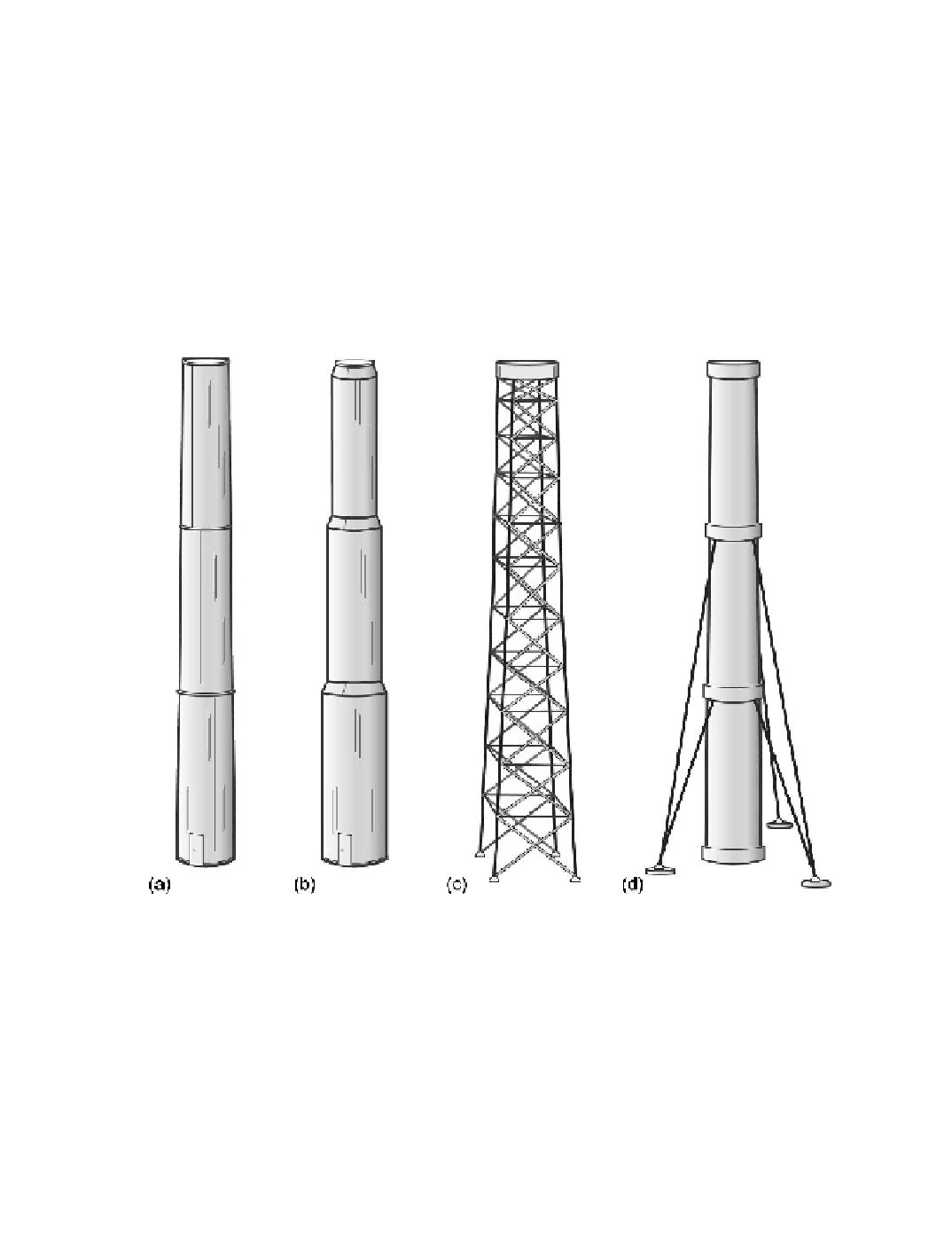Environmental Engineering Reference
In-Depth Information
machines to continuously and slowly oscillate plus or minus 0 to 5 deg around the opti-
mum rotor orientation.
Tower and Foundation
Figure 4-4 shows some of the many configurations of wind turbine towers that have
been tried in the past, such as tapered tubular shells, stepped tubular shells, trusses, and guyed
shells. Today, the vast majority of towers for large- and medium-scale commercial wind
turbines use cylindrical and tapered tubular shells made of rolled steel plates and configured
as free-standing
monopoles
(see Figs. 4- to 4-4). A concrete foundation is typically custom
designed for these towers based on the soil conditions at the site. Tower heights normally
range from 40 m up to more than 60 m. Towers are often manufactured as close to the site
as possible to reduce transportation and logistics costs.
Figure 4-4. Typical HAWT tower configurations.
(a) Tubular shell (b) Stepped shell (c)
Truss (or lattice) (d) Guyed shell (or, similarly, guyed truss)
The expertise for manufacturing steel shell towers is widely available, although the
thickness of the steel plates and the diameter of the sections for large-scale towers some-
times exceed the limits of local rolling facilities. Concrete is being used more frequently in
the lower sections of larger towers, to mitigate high steel prices and transportation limits.
Enercon
, builder of some of the largest wind turbines in the world, is using pre-cast concrete
towers.

Search WWH ::

Custom Search